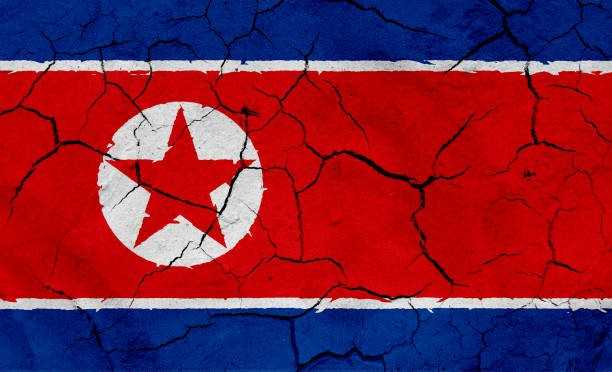How North Korea Became So Poor – In-depth Commentary

The two nations formed separate governments in 1948—the Soviet-aligned and socialist DPRK to the North and the West-aligned capitalist Korean Republic to the South. These two governments adopted very different economic policies. In North Korea, Kim Il-Sung, a leader of anti-Japanese communist partisans, rose to power as a dictator in 1947.
He established a rigid, centrally planned economy with the help of the Soviet Union. This policy was known as the Juche system, with the ultimate goal of self-sufficiency. Under this economic model, markets were banned, and private property was outlawed. The government curtailed freedoms in marketplaces and many aspects of North Koreans’ lives.
In contrast, South Korea, led by the staunch anti-communist Syngman Rhee and later General Park Chung-Hee, established a market economy that recognized private property. The state threw its weight behind economic growth. It’s easy to see which of these models would lead to long-term economic prosperity.
The period following the Korean War marked the golden age for North Korea, where the country underwent rapid reconstruction and industrialization. North Korea benefitted from economic assistance and expertise from other Communist Bloc countries, especially Russia and China. Despite the devastation of the war, North Korea’s initial industrialization was impressive.
North Korea has a significant amount of mineral deposits. Adopting the ideology of Juche, which means self-reliance, and the Soviet model, North Korea moved toward relatively self-reliant industrialization. The government emphasized building heavy industry, encompassing the iron, steel, chemical, and machine tool sectors.
North Korea steadily increased its industrial output, producing steel, trucks, tractors, generators, and heavy machinery. Until the early 1970s, North Korea was more industrialized than South Korea and had a higher per capita income. At the time, it was one of the most industrialized countries in Asia.
Kim Il-Sung would eventually purge pro-Chinese and pro-Russian elements from the ruling elite and make the Juche system the primary state ideology. Unfortunately, North Korea’s Juche system and command economy would eventually be disastrous. Systemic economic inefficiency began to emerge in the late 1960s, and from the early 1970s, the North Korean economy began to stagnate.
Unlike other socialist nations, North Korea didn’t open its economy and develop methods of liberalizing economic management. Shortages of skilled labor, arable land, energy, and transportation impacted long-term economic growth. North Korea consistently failed to meet its planning objectives.
Poor foreign trade relations were also a significant factor that contributed to North Korea’s economic decline. In North Korea, the Juche ideology failed to encourage foreign trade, and the country suffered from chronic foreign exchange shortages. In the 1950s and 60s, trade in North Korea grew steadily, mainly with communist countries.
The Soviet Union was North Korea’s predominant trade partner until the 1970s, when China played a more prominent trade role. There was a brief trade opening with the West. North Korea needed more advanced technology and had an economic rivalry with South Korea. Therefore, the government imported technology and turnkey plant machinery from Europe and Japan.
North Korea was to pay for these imports through increased export earnings and short-term credits. Unfortunately, due to economic recession in the West and oil shocks, the demand and price of North Korea’s minerals dropped significantly. Predictably, North Korea could not service the debts, estimated to be about $2 billion.
North Korea also suspended debt payments to the Soviet Union and China. Few countries were willing to lend North Korea any money after this, and the country was largely cut off from international capital and advanced technologies. The shortage of hard currencies affected North Korea’s ability to import capital goods, oil, food, and modern technology. These issues negatively impacted North Korea’s industrial and agricultural sectors and further slowed its economy.
While there aren’t detailed statistics from North Korea due to the government’s secretive nature, the available evidence confirms what was known from the recurring food shortages at the time. Agricultural productivity in the country was collapsing. Food was a critical sector severely impacted by Kim Il-Sung’s political and economic policies.
For starters, large parts of North Korea are hilly and mountainous. The amount of arable land in North Korea is less than 15 percent of its total area, and the growing season is short. The South had good agricultural land, which the North could not access. Motivated by the Juche ideology and food security concerns, North Korea wanted to be self-sufficient agriculturally.
Interestingly, the food security policies North Korea adopted in the 1960s had some success and improved the country’s food production to the point where they exported some rice and grain. These measures included electrifying rural areas, irrigating farmland, mechanizing farming, and increasing the use of fertilizers. The government also terraced hills and reclaimed tidal flats to increase farmland.
However, this drive for self-sufficiency would have some negative consequences. First, it required a significant expenditure of resources. Some of the farming methods, like cropping, caused soil depletion. Increased use of chemical fertilizers caused soil acidification, and poor terracing led to soil erosion.
Also, socialist policies incentivized very few people to put in the effort or invest in maintaining or increasing productivity due to the lack of private property. The repressive regime created by Kim Il-Sung implemented a socialist system of agriculture. State collectivization in the 1950s allowed only small family plots, much less than in other communist countries.
Grain trade was strictly forbidden, and food was collected and publicly distributed. The capital made all production decisions, including what would be planted on which farm. The totalitarian regime meant that there was no creativity or entrepreneurial initiative.
In effect, Kim Il-Sung created a political engine that stifled any economic incentive. The regime had to resort to mass mobilization and the threat of persecution to force more work on the populace to make up for food production deficits. Food production couldn’t meet the country’s nutritional needs, and shortages were common.
By the 1980s, North Korea started to exhibit symptoms of a collapsing economy. The first signs of severe food shortages started becoming apparent when the government had to cut grain rations. The government wasn’t willing to import substantial food since the priority was military spending.
The Juche ideology of self-sufficiency also didn’t help matters. The economic decline in the 1980s contrasted with South Korea, which was developing rapidly and surpassed North Korea’s per capita income and GDP. North Korea faced a shortage of industrial inputs such as chemical fertilizers, electricity, and pesticides.
Farming equipment started becoming obsolete, and the infrastructure developed in the boom of the 1960s began to decay. There were also raw material, energy, and hard currency shortages. As a result, agricultural input began to decline well before the series of well-known natural disasters that would devastate the country in the mid-1990s.
The 1990s marked the point where North Korea’s economic stagnation and decline would turn into a true crisis, with the country experiencing a full-scale economic collapse. On the heels of years of economic mismanagement, a series of political events and natural disasters would push North Korea to its lowest point.
By 1990, severe food shortages forced North Korea to import food from other countries like Thailand and South Korea. North Korea’s political and economic systems were too rigid, leaving the nation unprepared for what would come next. The first disaster struck in August 1995.
A series of widespread floods destroyed vast portions of North Korean farmland, destroying a staggering amount of the nation’s rice crop and displacing many people. If that wasn’t enough, more floods and droughts followed the 1995 catastrophe, leaving North Korea with severe food shortages. Between 1995 and 1998, North Korea experienced one of the worst famines in an industrialized country in modern times.
According to estimates, the crisis led to the death of 500,000 to 1 million people, or 3 to 5 percent of the population. The surviving North Koreans were severely impoverished, and North Korea had to request humanitarian assistance from the international community.
International food aid helped North Korea escape from catastrophic starvation and improved the situation by the turn of the 21st century. However, the population remains vulnerable to malnutrition and worsening living conditions. Food scarcity was not the only problem North Korea faced during its economic decline in the 1990s.
The energy sector was also a significant bottleneck in the country’s economy. From the turn of the decade, electricity, coal, and oil supply steadily declined and affected virtually all sectors of the North Korean economy. North Korea has no gas or oil. Before the collapse of the Soviet Union, the country imported crude oil via pipeline at favorable prices.
After the fall of the Soviet Union in 1991, Russia withdrew economic support and required North Korea to pay for imports in hard currency. Oil imports reduced significantly as a result. China also started reducing oil exports to North Korea in 1994, worsening North Korea’s energy crisis.
North Korea refined the imported oil for agricultural machinery and transport, and this severe import cutback led to significant problems in the agricultural and transportation sectors. The story was the same for coal. Coal production in North Korea peaked in the late 1980s and steadily declined in the 1990s.
The leading causes of coal shortages included electricity shortages, mine flooding, and obsolete mining technology. North Korea used coal for electricity generation and industry, with the shortage crippling these sectors considerably. The 1995 floods also damaged some of North Korea’s hydroelectric generation facilities.
The 1990s also brought a blow to North Korea’s foreign relations with the loss of Eastern Bloc trading partners. Russia recognized South Korea in 1990, and the trade volume between the two countries increased. This turn of events wasn’t good news for North Korea.
A year later, Russia retracted its concessions and demanded trade with North Korea in hard currency at global prices. North Korea’s foreign trade would decline sharply from this point and continue to deteriorate throughout the 1990s. Trade with China remained imbalanced throughout this period.
In 1998, under the leadership of Kim Jong-Il, who took over in 1994 after the death of Kim Il-Sung, the North Korean government started implementing structural reforms to recover from the economic collapse. Private ownership of assets was formally legalized, and control over production was decentralized. Further reforms around 2002 led to market activity expansion, flexible salaries and prices, some degree of monetization, and the introduction of accountability and incentive methods.
Despite all these reforms, North Korea was still a command economy, and almost all means of production were owned by the government, which defines development priorities. Although the economy somewhat improved from the lows of the 1990s, there were minimal improvements to the lives of North Korean citizens. In 2005, the leadership re-imposed private enterprise restrictions and returned to the old economic policies.
The North Korean government took a further step back in 2009 when it implemented a currency reform that involved taking two zeros off the currency. One hundred won were to be worth one won, with citizens allowed to convert the old currency into the newly printed one. The catch came when the government announced that one could only convert a maximum of 100,000 won, worth around $40 at black market exchanges.
This currency reform wiped out a significant fraction of citizens’ private wealth. It’s unknown exactly how much money North Korean citizens lost following this move. The government, being opposed to private property and markets, designed the currency reforms to punish citizens using black market exchanges and prevent them from becoming prosperous or sufficiently powerful to threaten the regime. It’s safer for the absolutist government to keep the populace poor.
The black market exchanges weren’t the whole story either. Most North Koreans keep their savings in won due to the shortage of banks in the country, which are all state-owned. In effect, the North Korean government introduced currency reforms to confiscate a significant amount of the citizens’ savings.
North Korea also continued to invest in and develop nuclear weapons in the face of international condemnation. The country faced international sanctions in the wake of the 2006 and 2009 nuclear tests, causing an economic downturn. To make things even worse, the military conducted more nuclear and missile tests in 2016, which led to the extension of international sanctions on major trade items.
International sanctions have had significant consequences for the North Korean economy. Various sectors, such as the construction industry, have slowed down and impacted housing prices. The mining industry, which accounts for a significant percentage of North Korea’s GDP, has also contracted sharply. North Korea has also experienced manufacturing stagnation, which reflects underinvestment, dilapidated capital stock, spare part shortages, power shortages, and poor maintenance.
To a large extent, this is the flip side of concentrating investment in the military sector as per the Songun policy. This military-first policy prioritizes the army in state affairs and resource allocation. Kim Jong-Il instituted the Songun policy in 1994, and Kim Jong-un has upheld and revamped the policy since he took power in 2011.
North Korea has continuously engaged in provocative displays of military might that heighten global tensions and lead to further tightening of international sanctions. Today, over two decades after disastrous famines in the 1990s, food shortages are still a significant concern in North Korea, especially outside the capital and several cities near the Chinese border. An increasing population makes the situation worse.
Although the international community assists North Korea with food, droughts, floods, recurrent heat waves, and limited supply of agricultural inputs like fuel and fertilizers contribute to low agricultural production. Lack of equipment and modern technology, hampered transport, and inadequate incentives affect crop productivity and distribution. Poor drainage and irrigation systems also worsen the effects of natural calamities like floods.
North Korea was once an industrialized, urban, and literate state and a beacon of communist success in the developing world. However, decades of totalitarian, military-focused, socialist leadership and gross economic mismanagement stifled economic growth and drove the economy into collapse. Although there have been improvements in marketization, digitalization, and science education, the North Korean government continues to stick to the rigid blueprint from which the country was founded, despite the economic problems the country has experienced over the past decades.
Meanwhile, widespread poverty, malnutrition, and hunger continue. China and Japan are among the few countries that supply food and energy to North Korea to prevent total collapse and a possible humanitarian and nuclear crisis. Kim Jong-Un and the elites surrounding the regime continue to live in luxury and keep things unchanged as they cling to power, and North Korean citizens continue to pay the price.
North Korea GDP per capita
- Nominal GDP per capita (2023): Approximately US $1,217.
- GDP per capita (PPP, 2023): Around US $1,500 to $1,800, according to varying sources.
These numbers suggest that North Korea is near the bottom of the world, at a per‑person output that is on par with low‑income countries. That PPP-adjusted number increases a little thanks to cheaper domestic prices, but it still represents an experience of terrible economic suffering and isolation.
Why is North Korea so strict
North Korea is that way because its repressive government enforces extreme control in order to retain its power and deter foreign influence. The government, headed by the Kim family dynasty, uses a vast network of harsh laws, surveillance, and censorship to keep control, silence dissidents, inspire loyalty, and provide ideological guidance. It was the state’s fear of rebellion, being exposed to foreign ideas, or the loss of control that led the state to throw a tight net over speech, travel, the media, and daily life.
Frequently Asked Questions (FAQs):
North Korea is deemed dangerous due to high government surveillance, lack of formal legal protection, and harsh penalties for minor infractions. Foreign visitors are under surveillance, and political tensions have made travel to the region dangerous. Danger is compounded by the lack of freedom and transparency.



